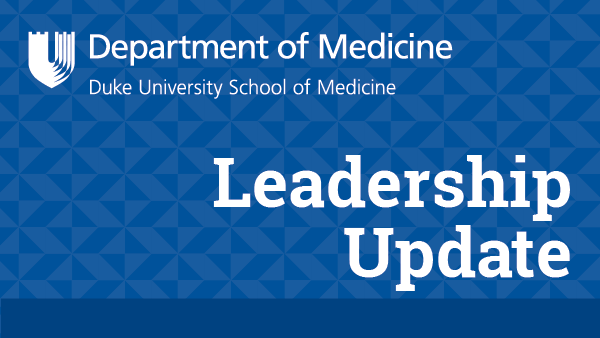
The Duke University Department of Medicine (DOM) will expand from 12 to 13 divisions on September 1, 2024 with the creation of the new division of Hospital Medicine. The new division will include all hospitalists and nocturnists who oversee patients in the general medicine wards.
The division will focus on improving hospital care quality, safety, and efficiency, enhancing the education of residents and students on the wards, and fostering research and innovation in hospital medicine and related fields. The division of will be led by interim chief Dr. Noppon (Pooh) Setji.

The new division is being carved out of the division of General Internal Medicine (GIM), the largest DOM division with more than 300 faculty members who provide clinical care, education, research, and leadership in various settings and domains.
This strength, however, also presents challenges in managing the work effectively and efficiently. Dr. William Yancy will continue in his current role as interim chief of the GIM division.
The GIM division will include primary care physicians and physician-researchers working in the outpatient setting and/or community. GIM will focus on advancing primary care delivery, promoting health equity, and addressing the social determinants of health. The division will also support research and education in primary care, population health, and public health/policy.
These changes, while significant, are a step towards a more collaborative future with increased opportunities for faculty members within and across the new divisions, as well as with other departments and partners, facilitated by a streamlined and responsive administration, governance, and communication within the divisional structures, said DOM Chair Dr. Kathleen Cooney.

“This change is a testament to our commitment to enhancing the academic mission, clinical excellence, and professional development of our faculty and staff, and it brings with it a host of exciting new possibilities,” she said. “Both divisions will continue to enhance our commitment in patient care, research, teaching, and career development for their division members. We value each member of our team and are dedicated to creating an environment where everyone feels respected and included.”
In addition to working with the administrative teams for both divisions to create effective management structures, the next steps include creating search committees that will use an equitable and transparent process to identify a diverse group of candidates and to help select outstanding permanent leaders for both divisions.
We believe that this change will create more opportunities for collaboration, innovation, and growth within and across the new divisions, as well as with other departments and partners,” Dr. Cooney added. “It will also allow for a more streamlined and responsive administration, governance, and communication within the divisional structures. We are confident that this change will enhance the academic mission, clinical excellence, and the professional development of our faculty and staff.”